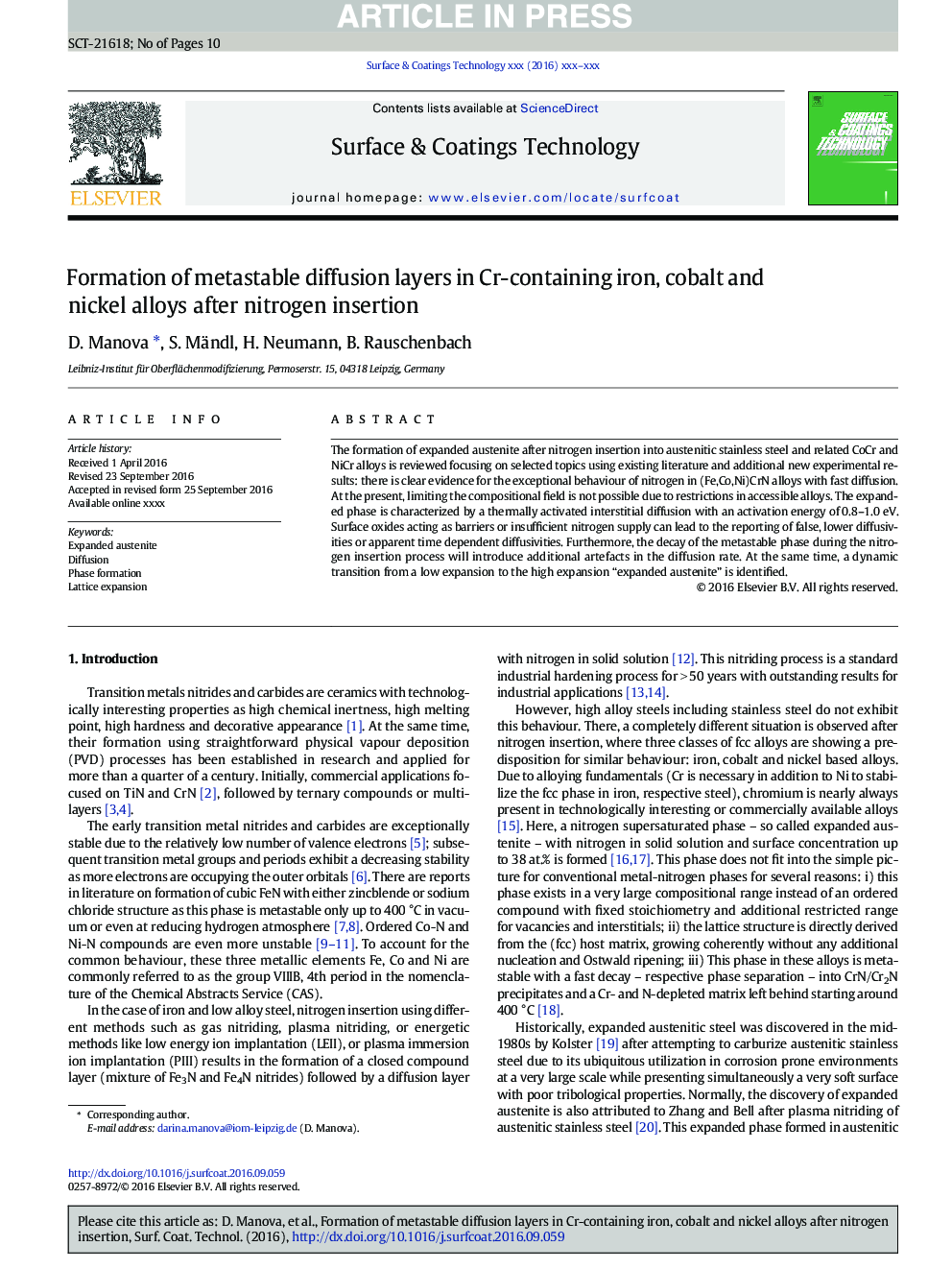| Article ID | Journal | Published Year | Pages | File Type |
|---|---|---|---|---|
| 5465581 | Surface and Coatings Technology | 2017 | 10 Pages |
Abstract
The formation of expanded austenite after nitrogen insertion into austenitic stainless steel and related CoCr and NiCr alloys is reviewed focusing on selected topics using existing literature and additional new experimental results: there is clear evidence for the exceptional behaviour of nitrogen in (Fe,Co,Ni)CrN alloys with fast diffusion. At the present, limiting the compositional field is not possible due to restrictions in accessible alloys. The expanded phase is characterized by a thermally activated interstitial diffusion with an activation energy of 0.8-1.0Â eV. Surface oxides acting as barriers or insufficient nitrogen supply can lead to the reporting of false, lower diffusivities or apparent time dependent diffusivities. Furthermore, the decay of the metastable phase during the nitrogen insertion process will introduce additional artefacts in the diffusion rate. At the same time, a dynamic transition from a low expansion to the high expansion “expanded austenite” is identified.
Related Topics
Physical Sciences and Engineering
Materials Science
Nanotechnology
Authors
D. Manova, S. Mändl, H. Neumann, B. Rauschenbach,
